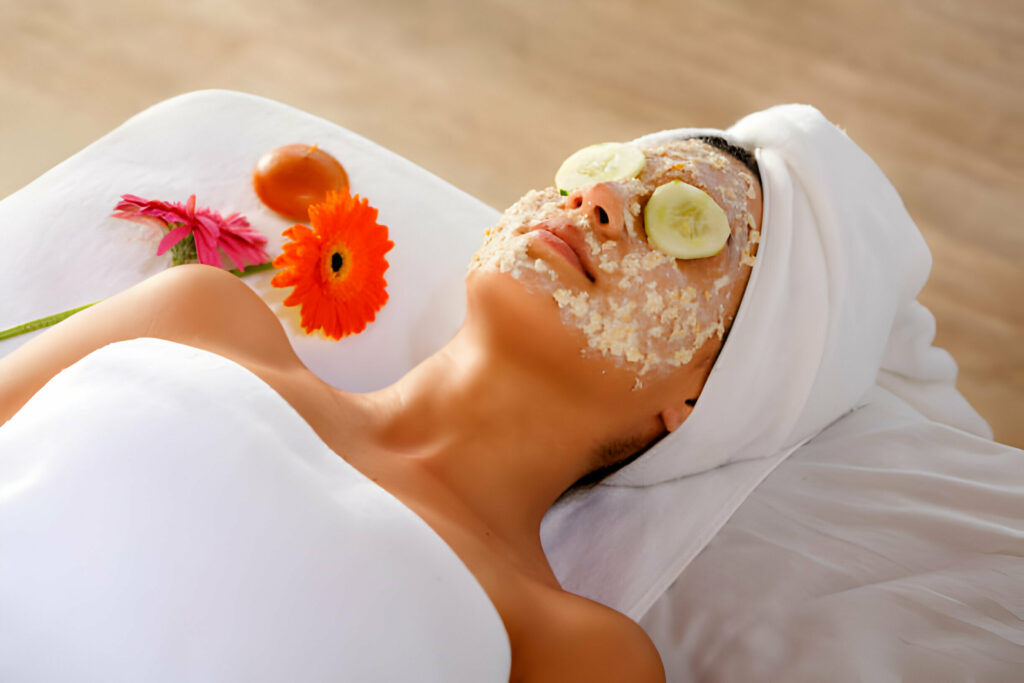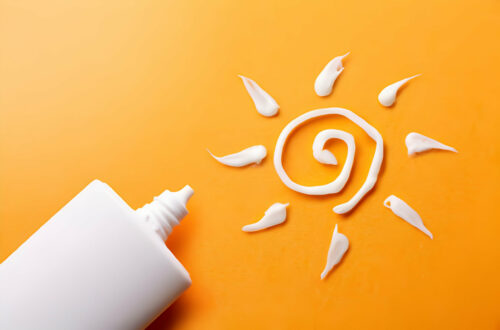Finding the right skincare routine for combination skin can sometimes feel confusing. What do you do when your skin is both oily and dry?
But don’t worry. While it might be a bit challenging, you can discover a routine that makes dry areas softer and controls shininess, suitable for skin care for sensitive skin. It doesn’t matter if some parts of your skin are oily and some are dry, or if these areas aren’t the most common ones — the approach is still the same.

Whether you stick with a proven skincare routine, decide how often to wash your hair, or explore different cosmetics, beauty is a personal thing.
What leads to combination skin? As explained by KavitaMariwalla, MD, a certified dermatologist and expert in aesthetics, combination skin is quite common, similar to other skin types.
The difference is that combination skin has both oily and dry areas. For instance, Mariwalla mentions that it’s usual to have an oily T-zone but dry cheeks.
Combination skin isn’t directly caused by anything (it’s inherited), but it can shift due to hormones and changes in seasons.
As we get older, our skin might become drier and less oily due to hormonal shifts. Other factors, driven by hormones, that can cause skin changes are menstrual cycles and birth control methods.
Indications of combination skin A mix of oily and dry skin can manifest in various manners and to varying extents.
There’s no strict rule about how it looks or feels, and it might alter with the climate, lifestyle choices, and stress levels.
With some observation, you can understand how your combination skin behaves.
Signs of oiliness might involve:
- Skin appearing shiny
- Pores seem larger
- Occurrence of acne
Signs of dryness might involve:
- Skin peeling
- Redness
- Sensation of tightness or coarseness
The Perfect Skincare Routine for Combination Skin
When it comes to planning your skincare routine for combination skin, it’s best to keep things simple and cautious.
Select gentle products that can hydrate dry skin spots without making oily areas worse, suitable for skin care for dry skin. Apply treatments only where they are needed for specific concerns.

Morning Routine:
Follow these steps to achieve balanced skin in the morning.
- Cleanser: Cleanse to remove any buildup from overnight.
- Toner: Use an alcohol-free toner to balance pH levels and remove leftover oil.
- Serum: Opt for a serum with hyaluronic acid to hydrate and protect your skin.
- Moisturizer: For dry parts, choose a creamy moisturizer; for oily parts, go for a lightweight, water-based one.
- Sunscreen: Pick a lightweight SPF 30 sunscreen to protect your skin.
- Makeup: If desired, use oil-free foundation and concealer.
Evening Routine:
In the evening, follow this order for your skincare routine:
- Makeup Remover: If you wear makeup, use a gentle makeup remover like micellar water.
- Cleanser: Cleanse both in the morning and at night. For evenings, use a cleanser that removes makeup and buildup.
- Exfoliant: Once a week, exfoliate to remove dead skin cells, clear pores, and alleviate dry areas.
- Facial Mask: Once a week, try multi-masking by applying different masks to different parts of your face.
- Serum, Treatment, or Moisturizer: In the evenings, use stronger products. Choose a moisturizer rich in emollients for dry areas.

Key Ingredients to Consider:
- Hyaluronic Acid: Ideal for hydration without making skin oily.
- Salicylic Acid: Can regulate oil production and prevent clogged pores.
- Lactic Acid: A gentle exfoliant for removing dead skin cells and clearing pores.
- Emollients: Such as shea butter and coconut oil to soften dry skin.
- Antioxidants: Look for vitamin C to protect your skin from environmental damage. Use products with vitamin C at night or wear sunscreen during the day for UV protection.
By following this routine and considering these ingredients, you can care for your combination skin effectively.
Natural Skin Care Tips for Combination Skin
Taking care of combination skin can involve simple and natural remedies that you might already have in your kitchen.
Coconut Oil: Virgin coconut oil is great for dry patches because it moisturizes and has anti-inflammatory properties. But be careful, as it can clog pores and isn’t ideal for acne-prone areas.
Honey: Honey is a good option. It hydrates by drawing moisture from the air, and its natural antibacterial and antiseptic qualities can support clear skin. Honey works well in homemade masks.
Oatmeal: To tackle excess oil, oatmeal is effective as it absorbs oil and soothes irritation, making it useful for skin care for oily skin. It’s also useful for removing dead skin.
Try an oatmeal mask:
- Mix ½ cup ground oats with 2 tbsp. warm water to make a paste.
- Apply to a clean face for 3 to 5 minutes.
- Rinse with lukewarm water and gently pat dry.
Budget-Friendly Approach: You don’t need to spend a lot on treating combination skin, including a skin care routine for men. Look for products with ingredients like niacinamide that work well for this skin type. You can also use multi-purpose ingredients to reduce costs.

Tips for Men: Men’s combination skin care is similar to women’s. Toning during cleansing can help clear impurities and soothe the skin due to its thicker and rougher texture.
Things to Avoid:
- Don’t skip moisturizing; find formulas suitable for your skin type.
- Remember to exfoliate gently once a week.
- Adapt your routine to changes in your skin over time.
Safety Reminder: Balancing good skin hygiene without overdoing it is important. Cleaning too much on dry areas can worsen dryness, while inadequate cleansing on oily areas can lead to breakouts.
When to Consult a Dermatologist for Combination Skin
Are you frustrated because your consistent skincare routine isn’t giving you the results you wanted? If managing combination skin feels challenging, it’s a good idea to see a dermatologist sooner rather than later, according to Choudhry.
“For combination skin, I recommend keeping a diary and visiting a dermatologist or an aesthetic physician for a skin mapping service,” she suggests. “This type of skin can be very tricky to manage, and skin mapping can help you create two skincare routines based on the different needs of various areas.”
Common Questions about Combination Skin
Here are answers to some frequently asked questions about combination skin:
- Can I use products for dry or oily skin, or will they irritate my skin? For the best results, Choudhry advises taking a targeted approach. You can use products meant for dry or oily skin but only apply them to specific areas. If unsure, consider using ingredients like pure rosehip oil or dry argan oil that work well for combination skin.
- What’s the best anti-aging routine for combination skin? To address aging skin concerns, focus on plumping fine lines, fading dark spots, and lifting sagging skin. Remember to care for your neck during cleansing, treating, and sunscreen application. Opt for a gentler exfoliant, especially if your skin is sensitive.
- How can I treat an oily T-zone without drying out drier parts of my skin, like my cheeks? Managing an oily T-zone while keeping dry cheeks comfortable is a common challenge. Choudhry suggests using a dry oil like argan oil to protect and moisturize dry areas without exacerbating oiliness.
- Can my diet improve combination skin? What foods might help? Diet’s impact on combination skin varies. Some reports suggest that spicy, oily foods and chocolate might worsen excess oil production. Research has also shown that a high glycemic diet, including foods that affect blood sugar, can contribute to acne. These foods include white flour, white rice, very sweet fruits, refined sugar, and starchy vegetables.
- Should I use different moisturizers—one rich, one lightweight—for combination skin? Determining whether to use different types of moisturizers depends on the severity of your dry and oily areas. A dermatologist can help you decide if two separate routines are needed.
In Conclusion
Finding the right skincare routine for teenage skin care combination skin can be a challenge. It might take time to discover the perfect combination of products. However, using appropriate products in specific areas can yield the best results for your skin. Always consult a dermatologist if you have questions or concerns.





